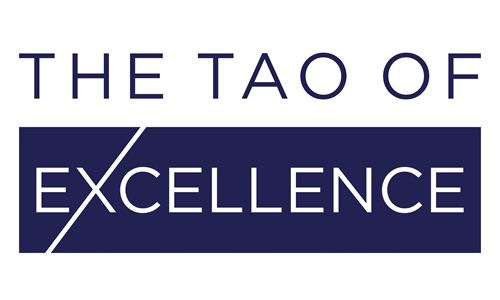New regulations and initiatives are being built in Europe to create a more transparent medical devices market. This presents not only the opportunity for gathering business intelligence that can develop and enhance any organization—improving the safety and efficiency of products and processes, but also the importance of data protection and transparency to the health of this market’s future.
Together with the new EU MDR, the introduction of Eudamed (the European Databank on Medical Devices) will also drive forward a stronger culture of transparency in the medical devices market in Europe. Eudamed will contain a rich source of information from across Europe, from medical devices, patients, manufactures, clinical studies, market surveillance and the supply chain, and will also be globally accessible to manufacturers and economic operators, Competent Authorities and Notified Bodies, with even a level of access for the general public.
Detailed and transparent data will mean a more in-depth understanding of the safety and performance of devices, and the internal workings of the European market. Data and analytics—and subsequently being able to identify gaps in the market or new competitive insights—will also drive increasingly targeted approaches to treatments and problem-solving solutions.
As a data source, the Eudamed also presents an opportunity for organisations to introduce smarter and more integrated medical devices and companion diagnostics. “In a bid to get closer to the end user, manufacturers now, more than ever, should leverage data and build intelligence into their products.”[1]
The current focus in the market on the power of data and importance of transparency was most recently evidenced by the EU Commission’s latest statement. This announced a fresh initiative to develop a secure system that will enable citizens to access their electronic health files across Member States. As Andrus Ansip, Vice-President of the Digital Single Market, said “it will improve life for citizens and help innovators find the next generation of digital solutions and medical treatments.” In the EU, this will enable:
- Citizens’ to securely access and share health data across borders;
- Better data to advance research, disease prevention and personalised health and care;
- Digital tools for citizen empowerment and person-centred care.[2]
Wider transparency initiatives to improve patient safety and the reputation of the health care industry also include the introduction of Unique Device Identification (UDI) and GS1—for the traceability of medical devices throughout the supply chain, as well as the Identification of Medicinal Products (IDMP), which represents a global data standard to describe a medicinal product from the ingredients through to its packaging, marketing and application.
In the US, the FDA is already utilising data access as a tool for development and growth. Its modern transparency strategy began in 2010 with the introduction of its Transparency Taskforce, that included the development of the FDA’s Data Dashboard. This presents publicly available datasets and a variety of data visualization tools to enable a better understanding of agency compliance actions, inspections, recalls and imports. Updated on a quarterly or monthly basis, this fast access to accurate data means that people are also “finding new ways to transform raw data into more useable information for patients, consumers, and clinicians—especially through smartphones, laptops, and tablets.”[3]
By accessing the FDA’s public databases (510(k), PMA and MAUDE among others) you can easily analyse the top PMA or 510(k) filers and identify issues with device safety and performance. This data can then be targeted at specialist areas, such as the number of monthly medical devices submitted in Orthopaedics over a specific time period. Analysed in relation to the wider market context, such as the financial market and regulatory or political change, this data can reveal patterns and opportunities in the market, leading to a better understanding of the competitive landscape and how best to act upon it.
However, data literacy is crucial to the correct use of data analytics, which relies heavily on data interpretation capabilities, data visualization techniques and a knowledge of the market. For this, the method of data collection and its sources need to be carefully assessed as the integrity of the data is key to its interpretation. The correct interpretation of data also relies on an analysis based on a wider context in order for its conclusions to be validated and verified, and ultimately acted upon.
To prepare for the transparency required by Eudamed for the European market, manufacturers can take the following steps to protect and harness the power of their data:
- Review the information required by the MDR and other regulatory bodies;
- Research the information currently available on industry databases worldwide (such as MAUDE or clintrial.gov) and define the required minimum of information that will be shared;
- Define or review roles in the organization for collecting this information;
- Discuss, define and design a content plan for the information that will be uploaded to Eudamed;
- Consider introducing a data content review step, particularly if you have a wide range of different products.
As outlined in last week’s article, early adopters of data collection that act now to prepare an effective strategy for this new wave of market transparency will find their businesses better protected for the future.
For more information or to gain insights into data collection and analytics, contact The Tao of Excellence and find out how best to optimise and utilize the transparency of Eudamed for your business.
 Jasminka Roth
Jasminka Roth
Founder and Director of The Tao of Excellence
Phone
+41 52 685 51 65
Email
[email protected]
Did you like this article? Follow us on LinkedIn and Twitter!
[1] KPMG International, 4 January 2018, Medical devices 2030, p.5, https://assets.kpmg/content/dam/kpmg/xx/pdf/2017/12/medical-devices-2030.pdf
[2] EU Commission, 6 February 2019, Press release, http://europa.eu/rapid/press-release_IP-19-842_en.htm
[3] Scott Gottlieb, FDA Speech, 16 January 2018, https://www.fda.gov/NewsEvents/Speeches/ucm592549.htm

